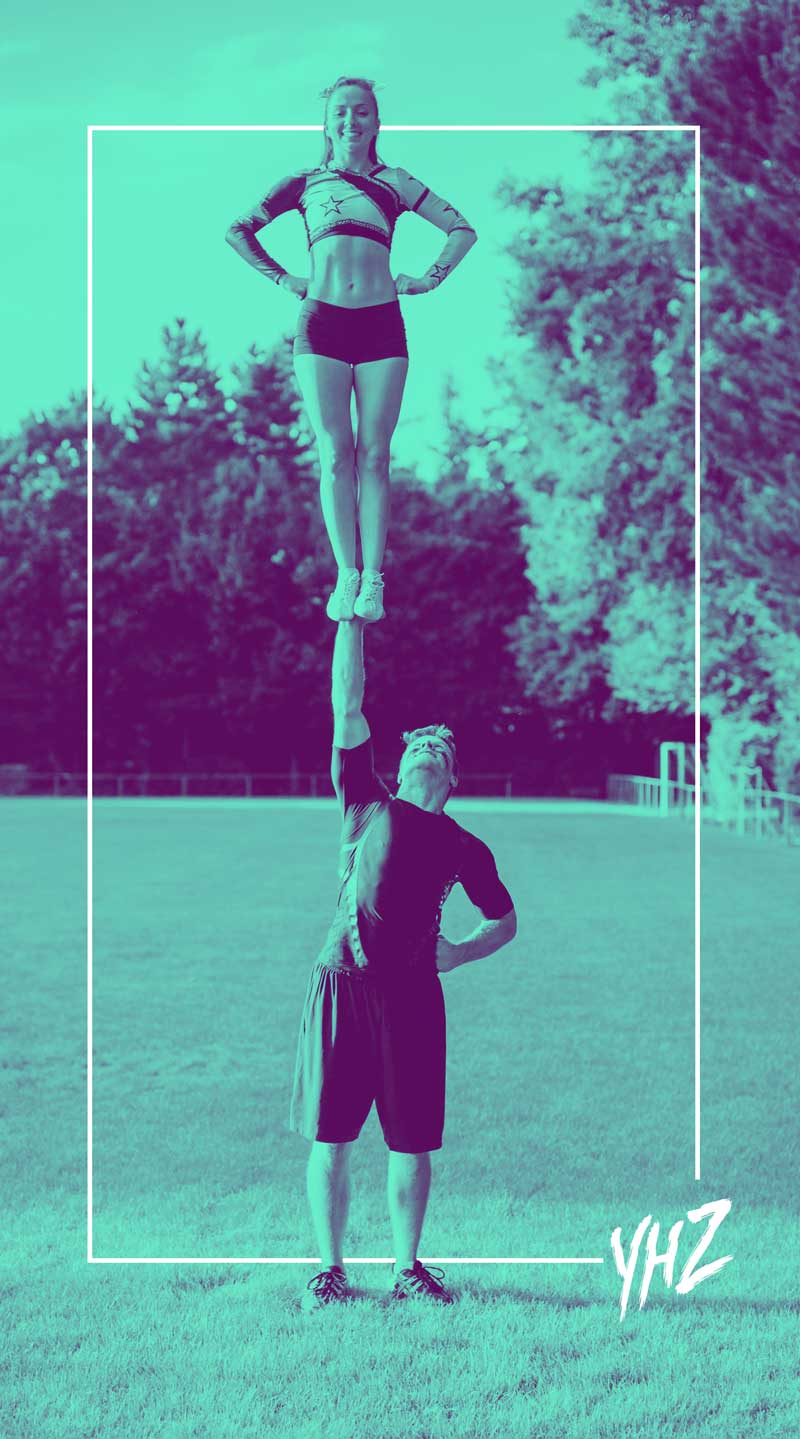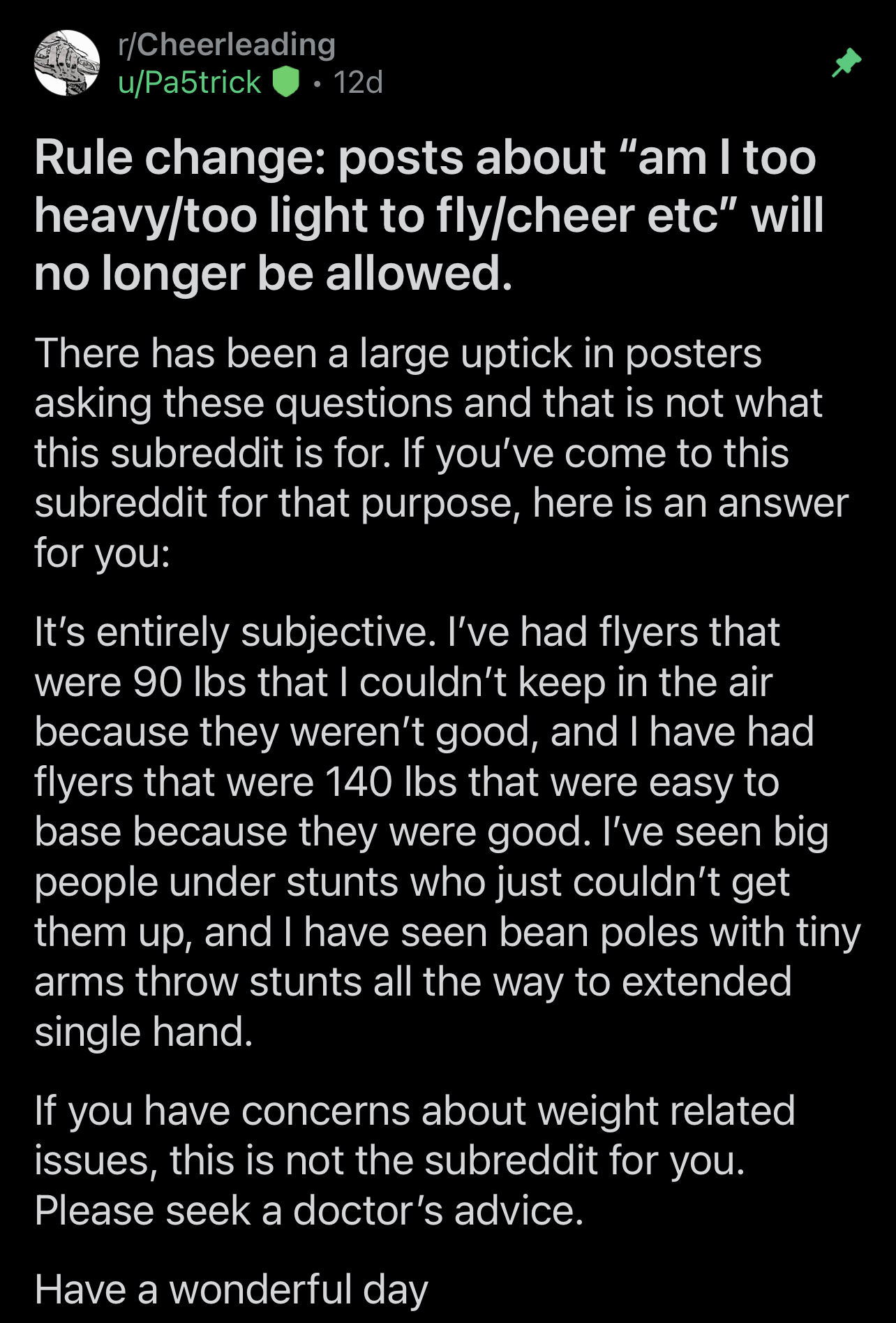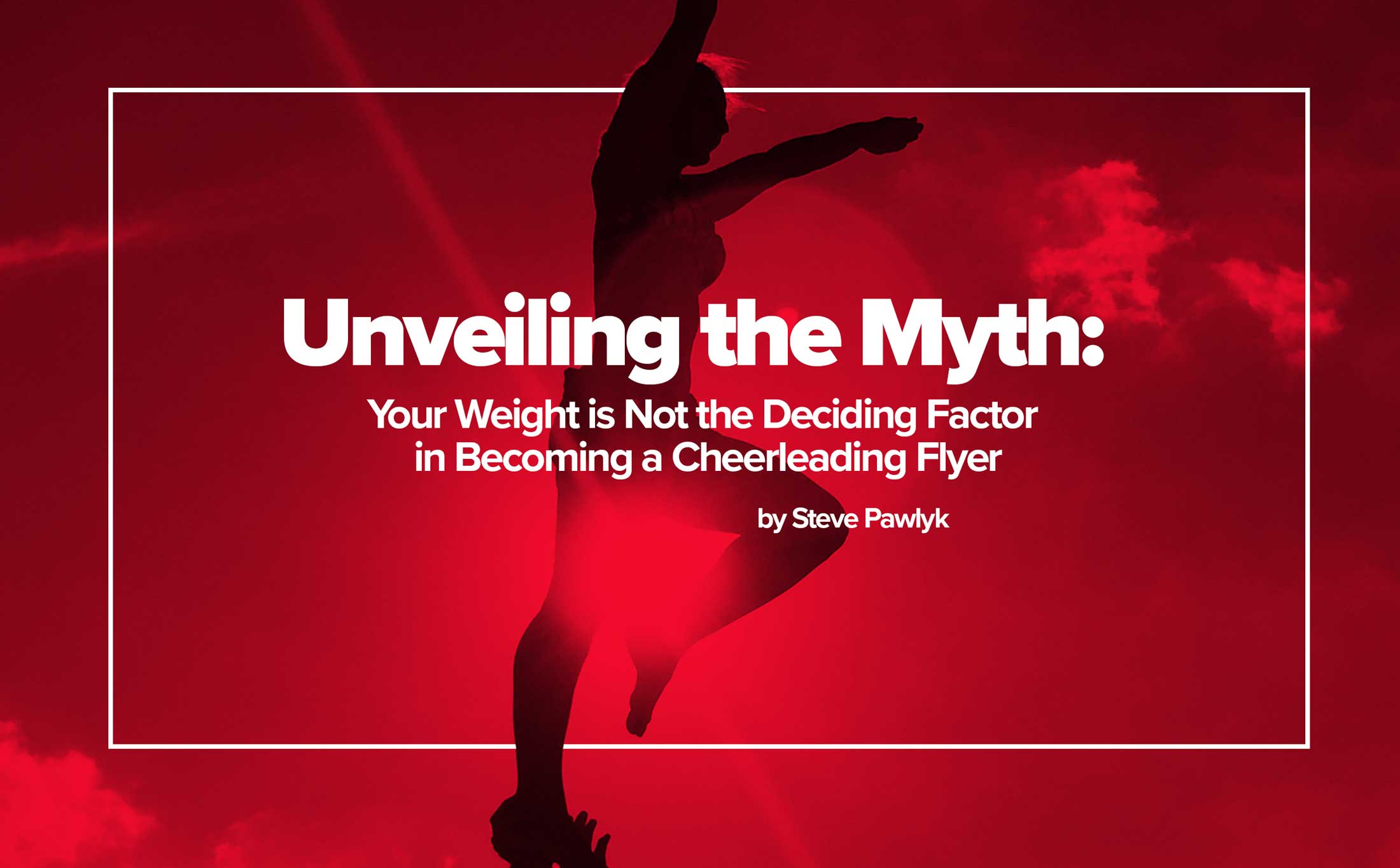By Steve Pawlyk
Published June 8, 2023
The cheerleading world is often fraught with misconceptions, and one of the most prevalent is the notion that a flyer’s weight is a determining factor in their role. This erroneous belief has persisted for years, suggesting that only those of lighter weight can become flyers. But it’s time to dispel this myth and reveal the truth: your weight does not matter when it comes to being a flyer in cheerleading.
Strong is the New Light
The narrative that a cheerleading flyer has to be petite to perform effectively overlooks a fundamental factor—strength. It’s not about the weight of the flyer; rather, it’s about the strength of the flyer and their bases. Bases must possess the strength and endurance to hoist and maintain the flyer at an elevated level, regardless of the flyer’s weight. Similarly, the flyer needs to have the necessary core strength and body control to maintain stability and perform stunts.

Skills Over Scales
Cheerleading is a performance sport. This means that the grace, elegance, and execution of routines take precedence over other factors, including weight. A flyer’s ability to synchronize movements, exhibit flexibility, and execute stunts with precision are skills that cannot be measured on a scale. Therefore, the focus should be on skill enhancement rather than weight management.
Body Confidence is Key
Being a flyer requires an immense amount of confidence and trust, both in oneself and in the team. Body shaming, which sadly often comes from misconceptions about weight and role suitability in cheerleading, can damage this confidence. It is important to remember that body positivity and confidence play a crucial role in performance. They have a significant impact on how an individual carries themselves, interacts with their team, and performs on the mat.
Safety First
Weight does not correlate with safety in cheerleading, but correct technique and training do. Regardless of size, if a cheerleader is not trained properly or does not perform the stunts correctly, accidents can occur. Proper training includes learning to fall safely, perform stunts correctly, and communicate effectively with teammates. Safety should always be the top priority, not the cheerleader’s weight.

The moderator of the r/cheerleading subreddit recently banned questions about weight and flyers and had a particularly succinct and insightful comment on the subject:
“It’s entirely subjective. I’ve had flyers that were 90 Is that I couldn’t keep in the air because they weren’t good, and I have had flyers that were 140 Is that were easy to base because they were good. I’ve seen big people under stunts who just couldn’t get them up, and I have seen bean poles with tiny arms throw stunts all the way to extended single hand.”
Inclusivity in Cheerleading
Promoting the idea that only lightweight individuals can be flyers perpetuates unhealthy body image standards and excludes those who don’t fit this criterion. Cheerleading, like any other sport, should promote inclusivity. The flyer’s role should be based on an individual’s skills, strengths, and abilities, not on their body weight.
Conclusion
The belief that weight is a deciding factor in being a flyer is a myth that needs to be busted. It’s strength, skills, confidence, proper training, and a positive attitude that truly make a flyer in cheerleading, not their weight. Let’s shift the focus from weight to performance skills, and promote an inclusive and supportive environment for all cheerleaders. After all, the magic of cheerleading lies in the unity and strength of the team, not the numbers on a scale.













